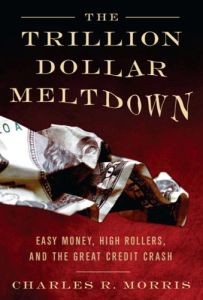
The Trillion Dollar Meltdown
Easy Money, High Rollers, and the Great Credit Crash
ISBN: 9781586485634
Pages: 224
Recommendation
In this excellent, highly readable book, Charles R. Morris combines legal and financial experience with literary craft. No ideologue, no partisan and certainly no salesman, Morris traces the roots of the 2007-2008 mortgage securities crisis to its distant origins in the 1970s. He argues that policy missteps under the Nixon, Ford and Carter administrations, when Arthur Burns chaired the Federal Reserve, led to dollar debasement. He contends that the decline of America’s currency and its business sector at that time led in turn to the Reagan administration’s zeal for deregulation and Chicago-school economics. He details his belief that Alan Greenspan’s policies took America from a relatively healthy financial status to a position perhaps as dire as in the late 1970s. Morris also reveals the privileges enjoyed by an out-of-control financial services system. getAbstract found this to be a trenchant and provocative read.
Summary
About the Author
Charles R. Morris, a lawyer and former banker, has published articles in numerous publications and has written 10 books.







Comment on this summary